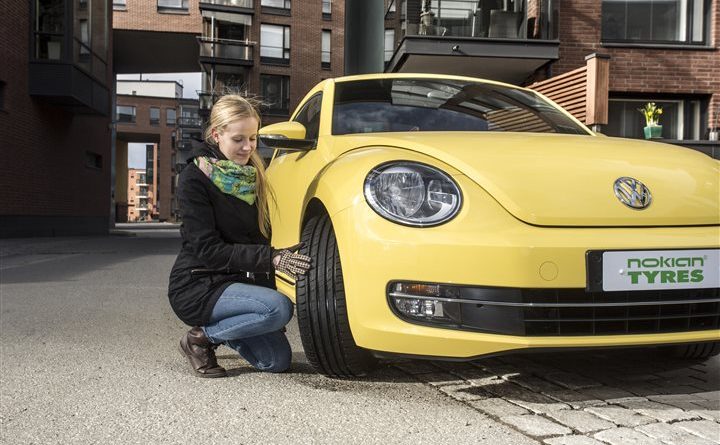Safe driving tips: how to get the most out of your tires
Tire’s tread depth significantly affects driving safety. In fact, to ensure a vehicle drives safely, the National Highway Traffic and Safety Administration recommends a tire be replaced once its tread depth reaches 2/32nds of an inch. Winter tires should be replaced even sooner.
Worn tires cause more than just headaches for drivers. Less tread means longer braking distances and more difficulty handling a car. This is especially true in slippery conditions because the tires are not able to effectively clear water from underneath causing the vehicle to hydroplane.
The contact area between the tire and the road is dramatically reduced when tires wear out and when driving speed increases. While driving 50 mph in 1/8 inch of water, the contact patch between the tire and road is only 16 percent compared to the contact patch of a stationary vehicle.
“Unfortunately, many drivers don’t regularly check the depth of tread on their tires. People check tread depths when fitting the tires, but then blissfully forget about them for the entire season,”
Monitoring the condition of tires throughout their lives helps drivers maintain safety on the road. So, what steps should you take to ensure you get the most out of your tires?
1. Monitor and rotate your tires.
Tires wear unevenly, especially on front wheel drive vehicles where the front tires wear down much quicker than the rear tires. For this reason, you should monitor the tread depth throughout the season and rotate tires from front to back, providing the tire size is the same on both axles.
If a set of tires are installed in the spring and used heavily until the start of autumn without being rotated, it is completely possible for the front tires to be worn down while the rear tires still have up to 70 percent of tread left.
Rotating helps to minimize the performance and grip differences between the front and rear of the car for more predictable handling.
2. How to measure tread depth.
A U.S. penny is a handy tool for measuring the main grooves in the center of a tire’s tread. Insert the penny into the main groove so that the edge of the coin touches the tread and Lincoln’s head is upside down. If the top of Lincoln’s head remains visible from the groove, the tires are fully worn.
Some new tires on the market have innovative tread wear indicators to alert drivers when their tires need replacing. In fact, all new models from Nokian Tyres come fitted with a Driving Safety Indicator (DSI) that indicates how much tread is remaining, as well as a raindrop or snowflake symbol that appears once the tire has worn down to the point where the vehicle could handle unsafely on wet roads.
3. Minimize tread wear through proper inflation.
To help extend tread life, maximize fuel economy and optimize a vehicle’s performance, it’s important to check a tire’s air pressure once per month in the summer and twice per month in the spring and fall when there are large fluctuations in temperature. Tire over-and under-inflation cause tread to wear quicker than normal and can potentially result in a dangerous blowout. Additionally, under-inflation will cause your vehicle to use more fuel (or reduce range in an electric vehicle) and diminish the performance of your vehicle as it requires more effort to for the car to move.
For the most accurate pressure reading, check the tires while they are still cold. Driving heats up the tires causing the air inside to expand resulting with an inaccurate reading. The correct tire pressure for the vehicle and tire size combination can be found on a placard in the driver’s door jamb, on the inside of the gas cap, or in the vehicle’s owner’s manual. Remember also to check the pressure of the vehicle’s spare tire (if equipped).
Drivers should keep these simple tips in mind throughout the spring and summer to help ensure a safe driving vehicle and to get the most out of their tires.
(BPT)










